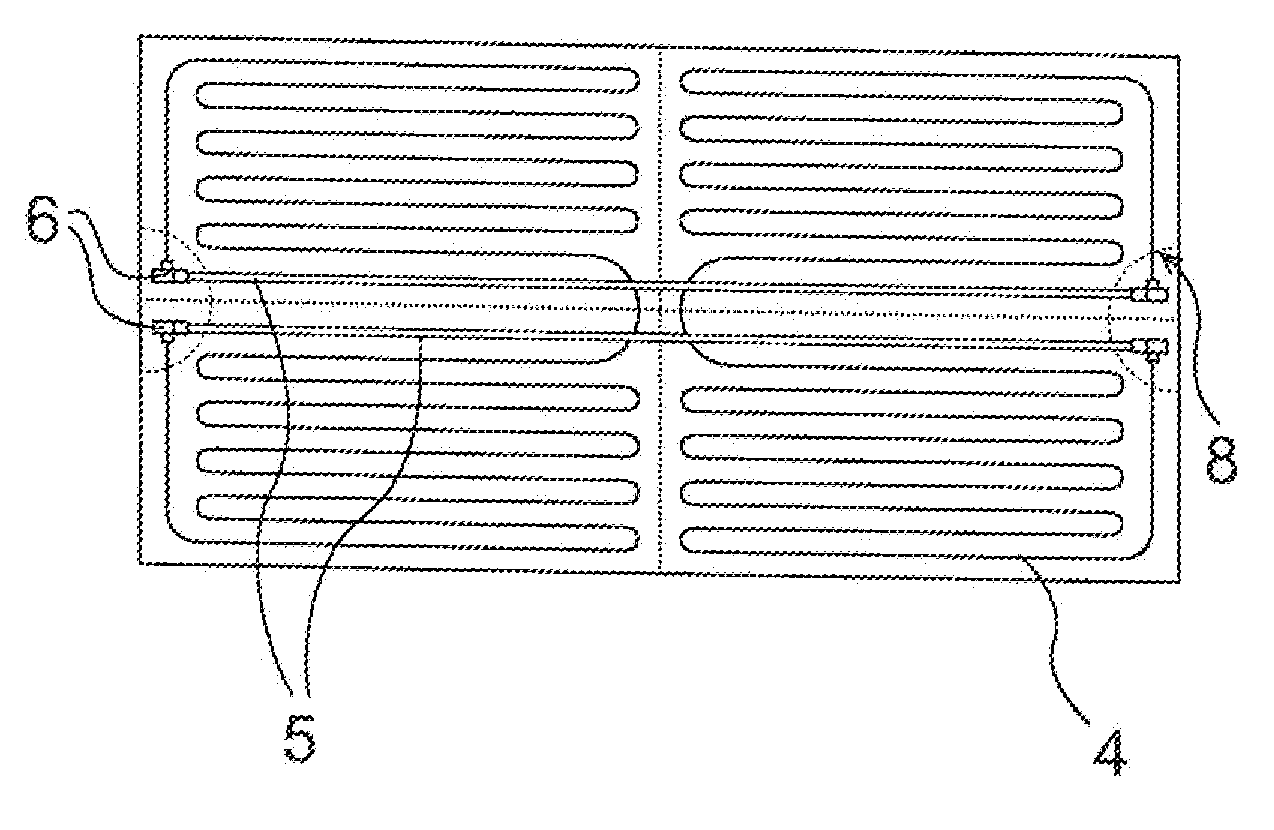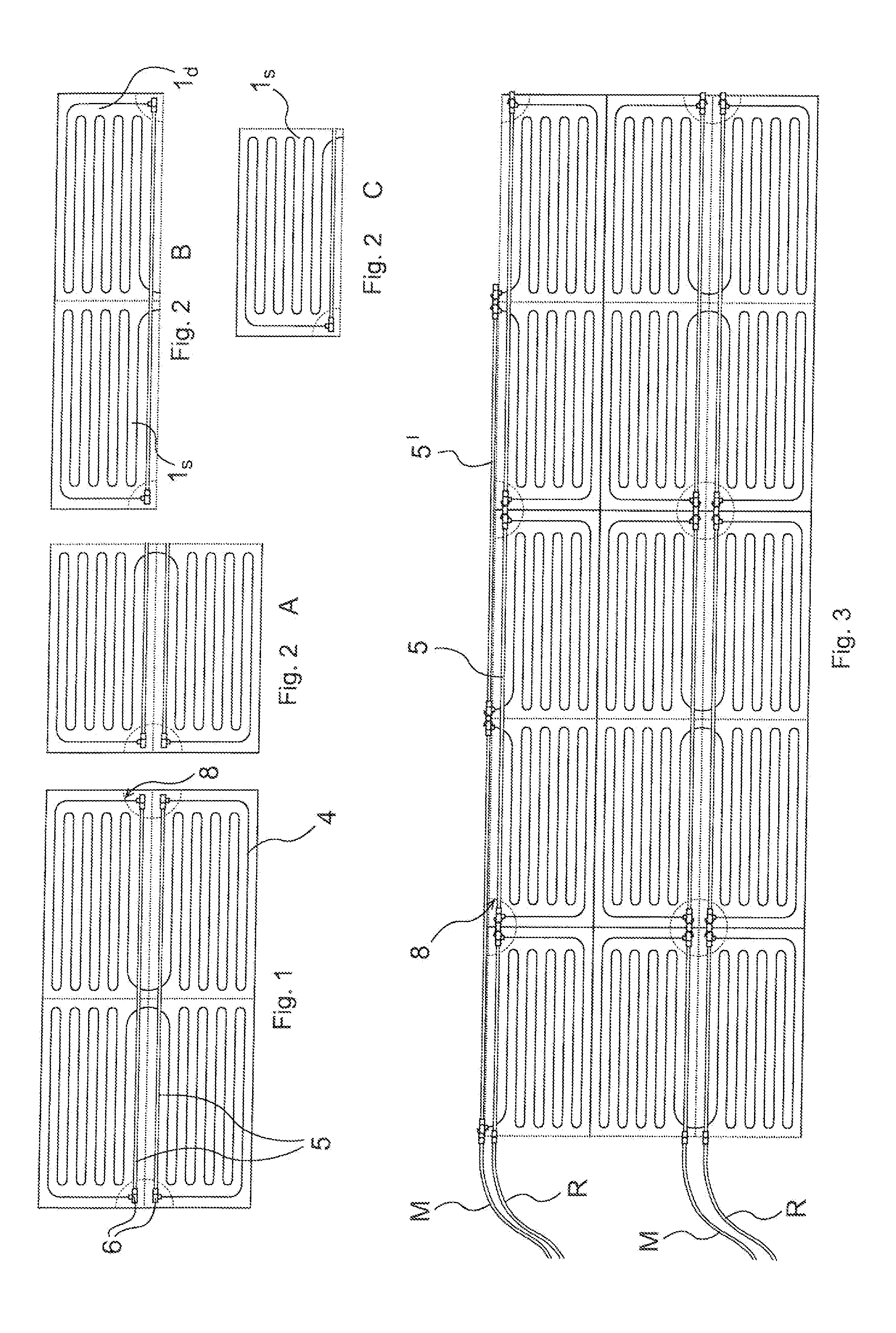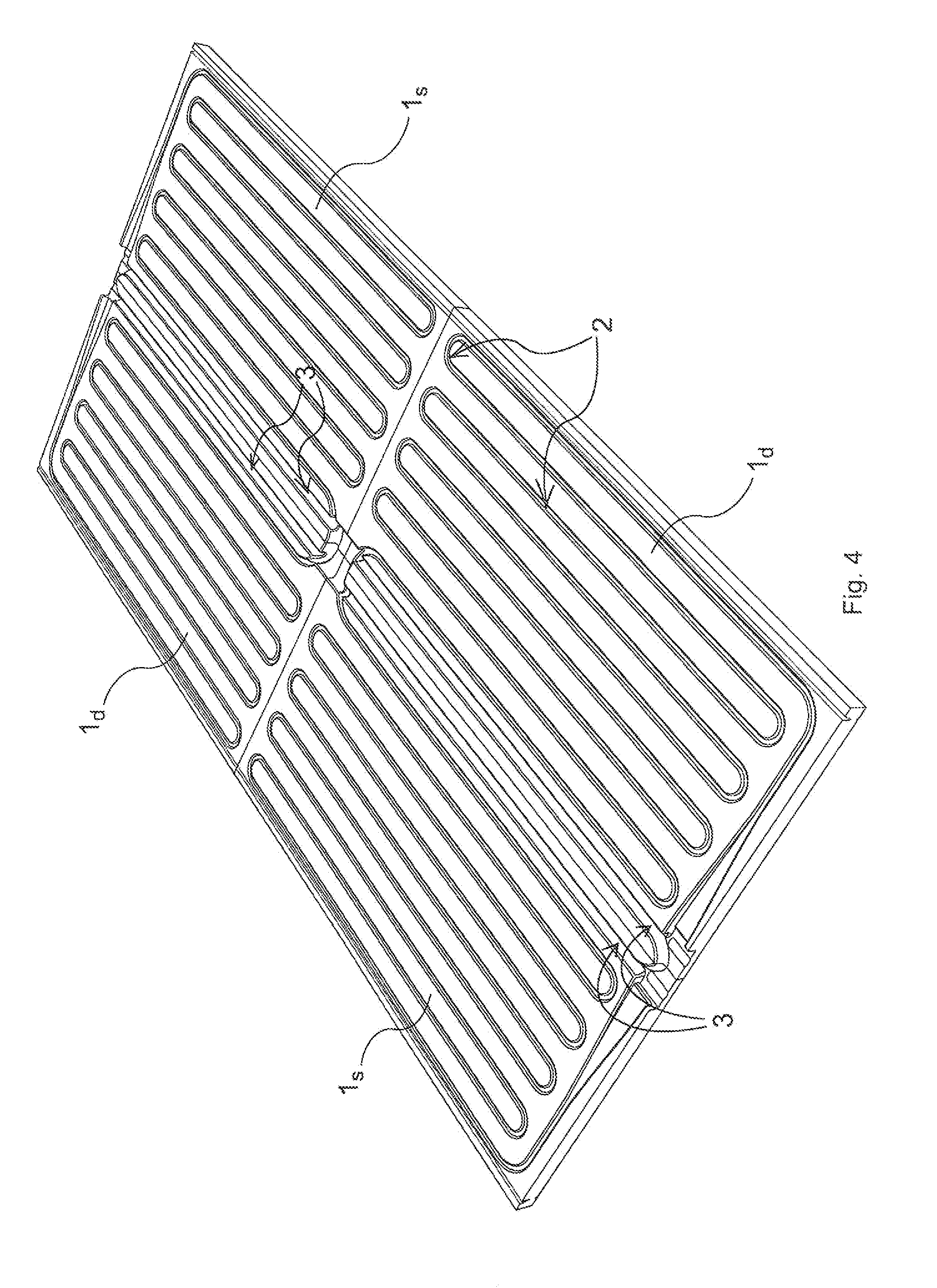Modular, prefabricated radiant panel with integrated headers
a prefabricated and radiant panel technology, applied in the field of modules and prefabricated radiant panels, can solve the problems of long installation time, complicated plants, disposal problems,
- Summary
- Abstract
- Description
- Claims
- Application Information
AI Technical Summary
Benefits of technology
Problems solved by technology
Method used
Image
Examples
Embodiment Construction
[0015]The radiant panel according to the present invention has a sandwich-like structure known per se, comprising a rear layer of thermally insulating material and a front layer provided with mechanical strength, thermal conductivity, and surface-finishing features suited to the specific application. As material for the forming of the rear layer, synthetic materials can be used, such as foamed plastic materials, such as polystyrenes or polyurethanes, or materials of a natural origin, such as cork. As material for the forming of the front layer, various types of composite layers having various functions can be used, preferably fibre-reinforced, such as for example plasterboard, fibreboard, asbestos cement, waterproof materials, sound-absorbing materials, materials of a natural origin (wood) or other similar materials. The two layers are coupled with each other by gluing and pressure, according to standard, equally widely-known procedures. For simplicity's sake, in the FIGS. 1, 2 and ...
PUM
 Login to View More
Login to View More Abstract
Description
Claims
Application Information
 Login to View More
Login to View More - R&D
- Intellectual Property
- Life Sciences
- Materials
- Tech Scout
- Unparalleled Data Quality
- Higher Quality Content
- 60% Fewer Hallucinations
Browse by: Latest US Patents, China's latest patents, Technical Efficacy Thesaurus, Application Domain, Technology Topic, Popular Technical Reports.
© 2025 PatSnap. All rights reserved.Legal|Privacy policy|Modern Slavery Act Transparency Statement|Sitemap|About US| Contact US: help@patsnap.com



